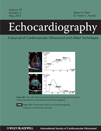
ECHOCARDIOGRAPHY-A JOURNAL OF CARDIOVASCULAR ULTRASOUND AND ALLIED TECHNIQUES
Scope & Guideline
Pioneering Research in Cardiovascular Ultrasound
Introduction
Aims and Scopes
- Echocardiographic Techniques and Innovations:
The journal emphasizes the development and implementation of new echocardiographic techniques, including three-dimensional echocardiography, speckle tracking, and automated assessment tools, aimed at improving diagnostic accuracy and patient outcomes. - Clinical Applications in Cardiovascular Disease:
Research published in this journal frequently explores the clinical implications of echocardiography in diagnosing and managing a wide range of cardiovascular conditions, including heart failure, valvular diseases, congenital heart defects, and post-surgical assessments. - Multimodality Imaging Approaches:
There is a significant focus on the integration of echocardiography with other imaging modalities such as cardiac MRI, CT, and nuclear imaging to enhance diagnostic capabilities and therapeutic decision-making. - Emerging Biomarkers and Prognostic Indicators:
The journal highlights studies investigating novel echocardiographic parameters and biomarkers that can predict cardiovascular events, disease progression, and responses to therapies, thereby aiding in risk stratification. - Pediatric and Fetal Echocardiography:
A considerable portion of the research is dedicated to pediatric and fetal echocardiography, addressing unique challenges and advancements in diagnosing congenital heart defects and cardiac conditions in younger populations. - Echocardiography in Special Populations:
The journal also covers the application of echocardiography in specific populations, including patients with diabetes, cancer, and COVID-19, focusing on tailored diagnostic and management strategies.
Trending and Emerging
- Artificial Intelligence and Machine Learning in Echocardiography:
Research utilizing AI and machine learning techniques for the automated analysis of echocardiographic data is gaining momentum, reflecting a broader trend towards integrating technology to enhance diagnostic precision and efficiency. - Advanced Strain Imaging Techniques:
There is an increasing focus on advanced strain imaging techniques, including global longitudinal strain and layer-specific strain, which offer deeper insights into myocardial function and are becoming standard in assessing various cardiac conditions. - Telemedicine and Remote Echocardiography:
The COVID-19 pandemic has accelerated interest in telemedicine and remote echocardiography, with studies exploring the effectiveness and feasibility of remote consultations and point-of-care ultrasound in managing cardiovascular patients. - Personalized Medicine Approaches in Cardiology:
Emerging research emphasizes personalized medicine strategies, utilizing echocardiographic findings to tailor treatment plans for individual patients, particularly in populations with complex comorbidities. - Echocardiography in Cancer Patients:
Growing attention is being directed towards the role of echocardiography in monitoring cardiac function in cancer patients undergoing therapies that may induce cardiotoxicity, highlighting the need for proactive cardiovascular care.
Declining or Waning
- Traditional Two-Dimensional Echocardiography:
There has been a noticeable decline in studies focusing solely on traditional two-dimensional echocardiographic assessments as newer techniques like 3D echocardiography and strain imaging gain prominence for their superior diagnostic capabilities. - Basic Echocardiographic Measurements without Advanced Analysis:
Research relying on basic echocardiographic measurements, such as simple ejection fraction calculations, is decreasing as there is a shift towards utilizing more complex analyses involving strain and tissue Doppler imaging to provide better insights into cardiac function. - Echo-Doppler Studies in Isolation:
There is a waning interest in echo-Doppler studies without the integration of advanced imaging techniques or multimodality approaches, as practitioners seek comprehensive evaluations that combine various imaging modalities for improved patient outcomes. - Echocardiographic Studies with Limited Clinical Application:
Several studies that focus on echocardiographic findings without direct clinical application or implications are becoming less frequent, as there is a growing demand for research that provides actionable insights into patient care.
Similar Journals

Journal of Echocardiography
Innovating Echocardiographic Practices for TomorrowThe Journal of Echocardiography, published by SPRINGER JAPAN KK, is a leading periodical dedicated to advancing the field of echocardiography and cardiac imaging. With an ISSN of 1349-0222 and an E-ISSN of 1880-344X, this journal serves as a vital resource for researchers, clinicians, and students alike, providing a platform for the dissemination of innovative research, case studies, and reviews focused on the latest echocardiographic techniques and applications. Operating under a prestigious publisher with a noteworthy reputation in the academic community, the journal features contributions that significantly impact the current understanding of cardiac health, making it essential reading for those in the fields of medicine, radiology, and imaging. As recognized in the 2023 Category Quartiles, it holds a solid Q3 ranking within the Radiology, Nuclear Medicine and Imaging category, further highlighting its relevance within the field, where it ranks #170 out of 333 according to Scopus. With coverage spanning from 2003 to 2024, the Journal of Echocardiography is committed to fostering an inclusive and comprehensive dialogue on the developments that shape modern echocardiographic practice.
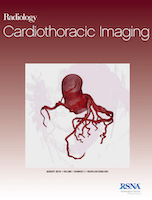
Radiology-Cardiothoracic Imaging
Exploring the Depths of Diagnostic ImagingRadiology-Cardiothoracic Imaging, published by the Radiological Society of North America (RSNA), is a leading peer-reviewed journal dedicated to advancing knowledge in the field of cardiothoracic radiology. With an ISSN of 2638-6135 and a remarkable 2023 Scopus ranking of #5 out of 333 in its category, the journal stands out in the Q1 tier for Radiology, Nuclear Medicine, and Imaging, showcasing its significant impact and high-quality research contributions. The journal is committed to providing an open platform for innovative research, insightful reviews, and clinical studies that address the complexities of cardiothoracic imaging, thereby facilitating the enhancement of diagnostic and therapeutic strategies. Operating out of Oak Brook, Illinois, the journal aims to engage a diverse audience of researchers, professionals, and students, fostering collaboration and knowledge exchange within this vital area of radiological science. With a convergence of years extending from 2019 to 2024, Radiology-Cardiothoracic Imaging remains at the forefront of emerging trends and findings, making it an essential resource for anyone passionate about the evolving landscape of cardiothoracic imaging.

Current Cardiology Reports
Innovative insights driving the future of cardiology.Current Cardiology Reports, published by Springer, is a leading peer-reviewed journal dedicated to advancing the field of cardiology and cardiovascular medicine. With its ISSN 1523-3782 and E-ISSN 1534-3170, the journal offers a platform for researchers and practitioners to share innovative research findings, clinical insights, and comprehensive reviews, contributing to the ongoing dialogue in cardiovascular health. Recognized for its high impact, Current Cardiology Reports holds a prestigious Q1 ranking in the Cardiology category for 2023 and ranks #83 out of 387 in Scopus, placing it in the 78th percentile among journals in its field. The journal, converging its insights from 1999 to 2024, aims to disseminate valuable knowledge that can inform clinical practice and influence future research directions. Although not an Open Access journal, the rich content and timely articles published within its pages are invaluable to both seasoned professionals and emerging scholars in cardiology. Based in New York, United States, the journal continues to play a critical role in shaping cardiovascular medicine through rigorous scientific inquiry and education.
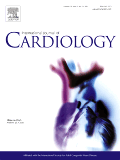
International Journal of Cardiology
Leading the Charge in Heart Health InnovationsThe International Journal of Cardiology is a premier publication in the field of Cardiology and Cardiovascular Medicine, published by Elsevier Ireland Ltd. With an impressive impact factor and ranked in the top quartile (Q1) of its category, this journal serves as a vital resource for researchers, clinicians, and scholars committed to advancing cardiovascular health. Founded in 1981, the journal has been pivotal in disseminating significant findings, with a wide-ranging scope that includes original research, reviews, and clinical studies aimed at improving patient outcomes and understanding heart diseases. Its robust ranking of #73 out of 387 in Scopus ensures that it remains a leading platform for impactful cardiovascular research. While currently not an open-access publication, the journal's commitment to quality and relevance makes it an essential reference point within an ever-evolving medical landscape. For those engaged in cardiovascular research, the International Journal of Cardiology is not just a journal; it's an indispensable source of knowledge shaping the future of heart health.

Frontiers in Cardiovascular Medicine
Championing Breakthroughs in Heart Health Science.Frontiers in Cardiovascular Medicine is a leading open-access journal published by FRONTIERS MEDIA SA, dedicated to advancing research in the field of cardiology and cardiovascular medicine. Since its inception in 2014, the journal has become a vital platform for the dissemination of high-quality research, boasting a commendable Q2 rank in the 2023 category for Cardiology and Cardiovascular Medicine. With a focus on promoting innovative studies and clinical insights, Frontiers in Cardiovascular Medicine facilitates open access to its content, allowing researchers, healthcare professionals, and students from around the globe to engage with the latest findings which are critical for the advancement of cardiovascular health. The journal's significant presence in the academic landscape, as indicated by its Scopus ranking (161/387 and 58th percentile), underscores its importance as a research outlet in this essential field. Located in Lausanne, Switzerland, the journal continues to support the global cardiovascular community by encouraging collaboration and knowledge sharing to address the challenges faced in cardiovascular medicine today.

INTERNATIONAL JOURNAL OF CARDIOVASCULAR IMAGING
Transforming Imaging Techniques for Better Patient OutcomesINTERNATIONAL JOURNAL OF CARDIOVASCULAR IMAGING, published by Springer, is a prestigious platform dedicated to the interdisciplinary field of cardiovascular medicine and imaging. With an ISSN of 1569-5794 and E-ISSN 1875-8312, the journal is recognized in both Cardiology and Cardiovascular Medicine (Rank #154/387, Q2 Category) and Radiology, Nuclear Medicine and Imaging (Rank #137/333, Q2 Category) disciplines, reflecting its significant impact within the scientific community. Established in 1988 and continuing to the present, it provides a rigorous forum for cutting-edge research, reviews, and clinical insights that are essential for advancing knowledge in cardiovascular diagnostics and therapeutic imaging. The journal's dual access options cater to both traditional and open-access readership, ensuring wide dissemination of its findings. In an era where cardiovascular diseases pose a significant public health challenge, the INTERNATIONAL JOURNAL OF CARDIOVASCULAR IMAGING stands out as an essential resource for researchers, healthcare professionals, and scholars aiming to innovate and improve patient outcomes through imaging technology.
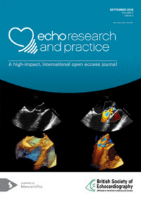
Echo Research and Practice
Enhancing Patient Outcomes through Innovative ResearchEcho Research and Practice, published by SpringerNature, is an esteemed open-access journal dedicated to advancing knowledge in the fields of Advanced and Specialized Nursing, Radiological and Ultrasound Technology, and Radiology, Nuclear Medicine, and Imaging. With a commendable impact factor and ranking in the upper quartiles (Q1) of its categories for 2023, this journal serves as a vital platform for researchers and practitioners eager to share groundbreaking findings and innovative practices that influence patient care and enhance clinical outcomes. The journal has been open access since 2014, fostering a collaborative environment for the global scientific community by ensuring that research is widely accessible. Featuring a range of cutting-edge articles, systematic reviews, and original studies, Echo Research and Practice aims to bridge the gap between theory and practical application, encouraging interdisciplinary dialogue among healthcare professionals and academics alike. For those looking to stay at the forefront of these rapidly evolving fields, this journal represents an invaluable resource for advancing their understanding and expertise.

HEART FAILURE REVIEWS
Shaping the Future of Heart Health Through Rigorous ReviewHEART FAILURE REVIEWS is a premier academic journal published by Springer, dedicated to the dynamic field of cardiology and cardiovascular medicine. With an impressive Q1 ranking in 2023, the journal stands as a vital resource for researchers, clinicians, and students seeking to stay abreast of the latest developments in heart failure management and research. Covering a broad spectrum of topics, including innovative therapies, epidemiology, and pathophysiology of heart failure, it fosters an environment for interdisciplinary collaboration. The journal is indexed with an ISSN of 1382-4147 and an E-ISSN of 1573-7322, ensuring widespread dissemination of knowledge. Although it does not currently offer open access options, its rigorous peer-review process guarantees high-quality content that contributes significantly to the scientific community. Established in 1996 and running through 2024, HEART FAILURE REVIEWS continues to be a leading platform for advancing understanding and treatment of heart conditions, making it an indispensable resource for all stakeholders in cardiac health.

Kardiologie
Transforming Cardiology Through Cutting-Edge Research.Kardiologie is an emerging journal dedicated to advancing the field of cardiology and cardiovascular medicine, published by SPRINGER HEIDELBERG in Germany. Established with the first issue in 2022, this journal provides a valuable platform for the dissemination of innovative research, clinical studies, and review articles that contribute to both theoretical knowledge and practical applications in cardiology. While the journal currently holds a Q4 category ranking in the field and occupies a percentile of 24 according to Scopus, it aims to enhance its impact factor by attracting high-quality submissions from researchers and clinicians alike. Kardiologie is particularly focused on bridging the gap between cutting-edge research and clinical practice, ensuring that the latest scientific findings are readily accessible to practitioners. Though it operates under traditional access options at present, the journal aspires to broaden its accessibility and reach in future editions, making it a pertinent choice for anyone interested in the evolving landscape of cardiovascular health.
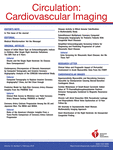
Circulation-Cardiovascular Imaging
Advancing cardiovascular imaging for better patient outcomes.Circulation-Cardiovascular Imaging is a prestigious journal published by LIPPINCOTT WILLIAMS & WILKINS, dedicated to advancing the field of cardiovascular imaging through high-quality research and review articles. With an impact factor placing it in the Q1 category across key areas including Cardiology and Cardiovascular Medicine, Medicine (miscellaneous), and Radiology, Nuclear Medicine and Imaging, this journal fosters scholarly communication among leading experts and emerging researchers. Established in 2008, it has rapidly become an essential resource for academics and professionals, given its commitment to disseminating groundbreaking findings and methodologies that influence clinical practices and patient outcomes. Circulation-Cardiovascular Imaging is designed to engage a wide audience, from seasoned practitioners to students keen on exploring the nexus of cardiology and innovative imaging techniques. Its significant visibility in the medical literature underscores its role as a cornerstone in the evolution of cardiovascular diagnostics and patient care.